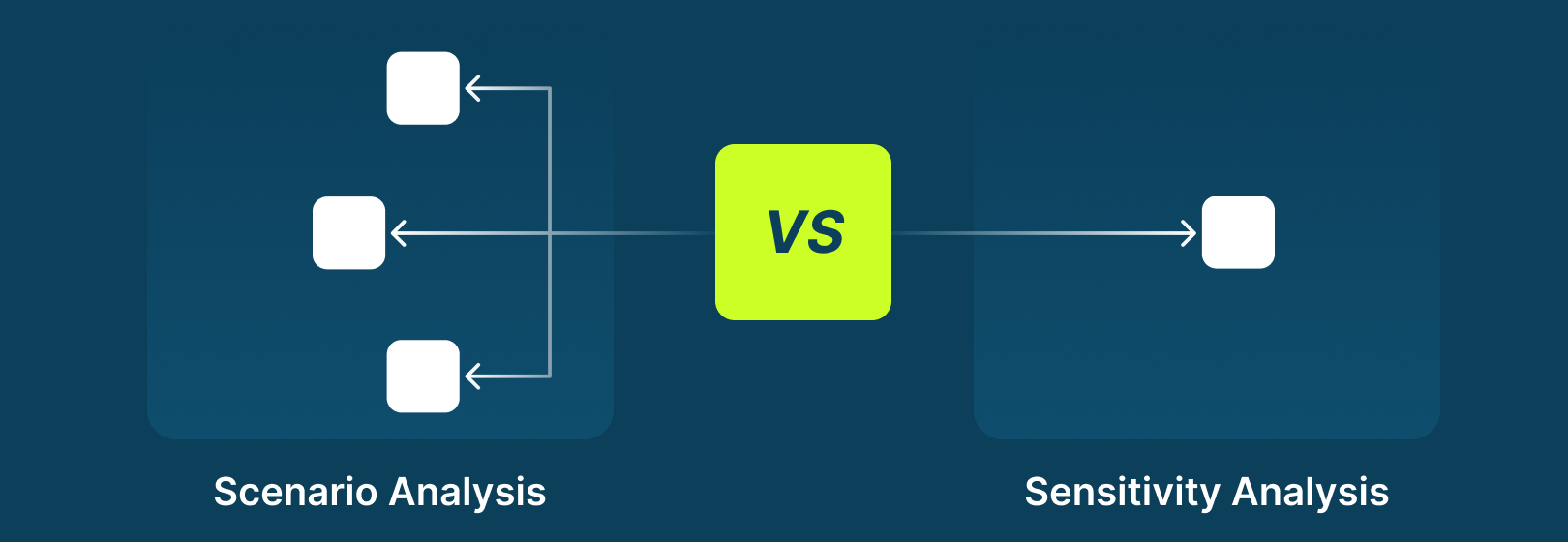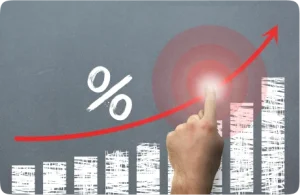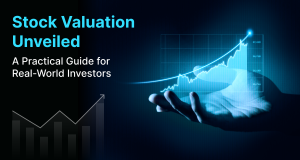Will your new product become the next big thing, or will supply chain issues sink it? Could shifting consumer trends turn your flagship service obsolete? In these high-stakes moments, two tools rise above the noise: scenario analysis and sensitivity analysis. It’s not about predicting whether it’ll rain tomorrow, it’s about packing an umbrella, sunscreen, and a parka so you’re ready for anything. Scenario analysis builds multiple “what-if” stories to stress-test your plans. Each story blends different economic, competitive, or operational assumptions to map out how your business might fare.
When It Works and When It Backfires?
Good scenario analysis forces teams to confront biases. Optimists must wrestle with downside risks; pessimists brainstorm opportunities in crises. I once watched a retail client shelve a costly expansion after a scenario revealed that a 2% interest rate hike would render their loans unsustainable.
But let’s be real: Scenario planning isn’t foolproof. In 2020, few companies had a “global pandemic” scenario collecting dust. Overloading teams with dozens of scenarios leads to paralysis, while oversimplifying creates blind spots. The sweet spot? Three to five sharply defined scenarios that cover the bases without drowning in detail.
A Lesson From the Real Business World
When Starbucks expanded to Italy, espresso’s birthplace, they didn’t just assume their Frappuccinos would charm locals. They modeled scenarios where:
- Italian consumers rejected “American coffee” as inauthentic.
- Existing cafés slashed prices to defend their turf.
- Cultural norms like no takeaway cups limited growth.
Result? Starbucks tailored stores to local tastes, added aperitivo menus, and focused on tourist hotspots. They turned potential disaster into a slow-but-steady win.
Sensitivity Analysis: The Art of Finding Your Business’s Pressure Points
If scenario analysis is a brainstorming session, sensitivity analysis is a laser pointer. It answers one question: What keeps you up at night?
Sensitivity analysis tweaks one variable in your financial model, say, raw material costs or employee turnover, to see how it ripples through your bottom line. Picture a bakery owner calculating how a butter price spike affects their croissant margins. Bump butter costs by 20% in the model, and suddenly those flaky pastries are a break-even nightmare.
Tech companies live by this. When Spotify tested its ad-supported tier, sensitivity analysis showed that even a 10% drop in premium subscribers would require a 30% increase in ad revenue to offset losses. That insight shaped their ad tech investments and playlist integrations.
The Good, the Bad, and the “Surprise Discivery”
Sensitivity’s strength is its simplicity. I’ve seen startups pivot entire business models after discovering that customer acquisition cost, not product price, was their Achilles’ heel.
But real life isn’t a lab experiment. Imagine analyzing how rising fuel costs impact a delivery company, but forgetting that drivers might quit for higher-paying gigs during the same crisis. Sensitivity analysis isolates variables, but humans live in the messy middle where everything happens at once.
Toyota’s famed “just-in-time” manufacturing model leans heavily on sensitivity analysis. By identifying which supplier delays hurt production most, they’ve built strategic stockpiles and diversified suppliers, turning a vulnerability into a manageable risk.
Scenario vs Sensitivity: A Tag Team for Tough Calls
Let’s end the confusion. These tools aren’t rivals, they’re partners. Here’s how they play together.
- Sensitivity analysis is your scout: It identifies which hills are worth fighting for.
- Scenario analysis is your strategist: It plans how to defend those hills in different weather conditions.
Marry Them for Maximum Impact
Picture a construction firm tasked with building a highway through unpredictable terrain. They don’t just wing it—they blend tools like a chef perfecting a recipe. Here’s how it works in practice.
Sensitivity analysis acts as their metal detector, pinpointing buried risks. For example, they discover that interest rate fluctuations and permit delays are the twin villains threatening their budget.
Scenario analysis becomes their blueprint for survival. They sketch three futures:
- Sunny Days: Rates stay low, permits fly through approvals, and the project finishes under budget.
- Storm Mode: Rates skyrocket, lawsuits tie up permits, and delays bleed cash.
- Reality Check: Moderate rate hikes and bureaucratic hiccups, but nothing catastrophic.
The Human Side of Analysis: Where Spreadsheets Meet Soul
Let’s be honest no one ever rallied a team around a pie chart. Behind every scenario model and sensitivity graph, there’s a room full of people biting nails, scribbling on whiteboards, and debating over cold coffee.
Scenario analysis works because it’s storytime for grown-ups. Imagine a CEO glossing over a risk report until someone paints this picture: “What if our top three clients jump ship to a startup that undercuts us by 40%?” Suddenly, the room gets quiet. That’s the power of narrative, it turns abstract numbers into gut-punch realities.
Sensitivity analysis, meanwhile, is the ultimate comfort blanket for control freaks. It answers the midnight thought: “If everything goes wrong, what’s the one knob I can twist to keep the lights on?” A retail manager might realize that even if holiday sales nosedive, renegotiating their warehouse lease could buy them six months to pivot. That’s not just data—it’s hope with a spreadsheet attached.
The Bottom Line
There is a truth no one tells you in business school. Uncertainty never dies, it just changes costumes. A TikTok trend explodes overnight. A supplier goes rogue. A competitor launches a product that makes yours look like a relic. You can’t script these moments, but you can stop them from scripting you.
Think of scenario analysis as your brainstorming bunker, a place to ask “What if?” without judgment. It’s where your team debates wild ideas, like launching a subscription model if inflation strangles one-time sales. Sensitivity analysis is your reality check, cutting through the noise to see what actually matters.
Together, they’re your Swiss Army knife to beat chaos. One tool helps you imagine a future where AI reshapes your industry, the other tells you whether your current IT budget can handle the upgrade.
So next time your team faces a “crossroads” moment, grab these tools. Build stories. Stress-test assumptions again and again. Then go make decisions so grounded that even when the storm hits, you’ll feel the thrill of the challenge.



